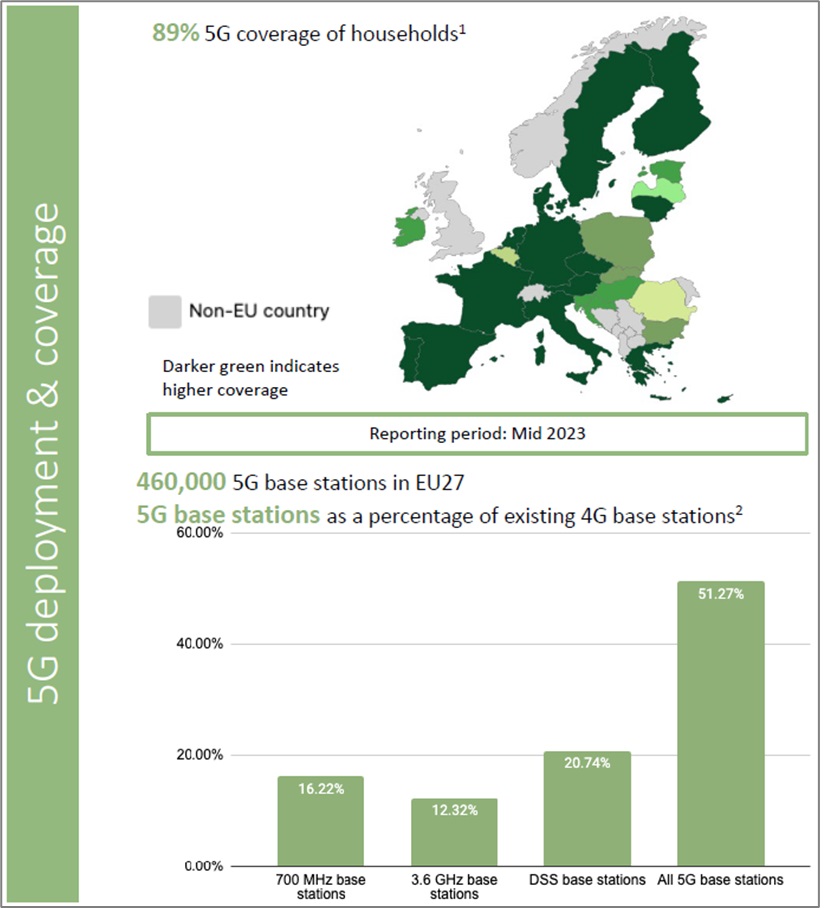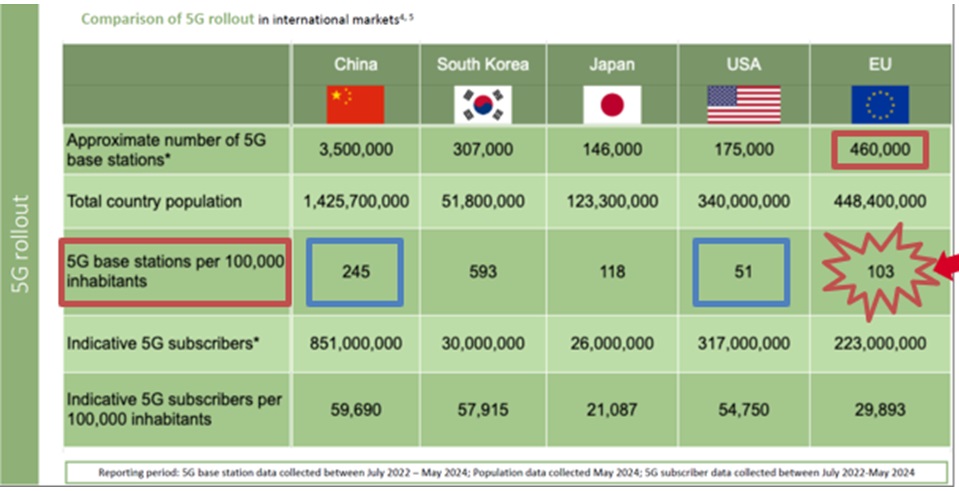The 5G Observatory is an initiative set up by the European Commission to monitor and report on the progress of the 5G Action Plan for Europe. It tracks the development and deployment of 5G networks across EU member states, providing comprehensive data and analysis on various aspects of 5G technology, including:
- Deployment: Status of 5G network rollouts, including infrastructure and coverage.
- Spectrum: Allocation and usage of radio frequencies designated for 5G.
- Market: Insights into 5G-related markets, including operator strategies and investment levels.
- Use Cases: Examples and analysis of how 5G is being applied in different sectors (e.g., healthcare, transport, manufacturing).
- Policy and Regulation: Information on the regulatory framework and policies affecting 5G deployment and usage.
The observatory provides regular reports, updates, and a variety of tools and resources to help stakeholders stay informed about the progress and challenges of 5G implementation in Europe. The goal is to ensure that Europe becomes a leader in 5G technology and fully leverages its potential for economic growth and societal benefits.
Here are the key highlights and recent updates up to June 2024:
5G Coverage and Base Stations
As of the latest reports, the 5G coverage of populated areas in the EU has reached 89%. This figure includes all forms of 5G coverage, such as those utilizing Dynamic Spectrum Sharing (DSS).

The total number of 5G base stations in the EU27 stands at approximately 460,000 (5G Observatory) (5G Observatory) reaching in average 103 5G base stations per 100.000 inhabitants, which means a more than double coverage compare to US market, but less than half of China coverage.

Spectrum Allocation
The allocation of the “pioneer” bands essential for 5G deployment has progressed significantly, with 73% of these bands assigned across the EU. These bands include 60 MHz in the 700 MHz range, 400 MHz in the 3.6 GHz range, and 3250 MHz in the 26 GHz range (5G Observatory).

Technological Advancements and Trials
Recent technological trials and advancements highlight the continuous innovation in the 5G landscape:
- Nokia, in collaboration with A1 and Microsoft, completed a successful trial of 5G edge cloud network slicing, a critical development for enhancing network efficiency and customization (link).
- Elisa has launched Finland’s first standalone 5G subscription, marking a significant step towards more robust and independent 5G networks (link).
Strategic Collaborations
Several strategic collaborations and projects are underway to bolster 5G technology:
- The Global Satellite Operators Association (GSOA) and the European Space Agency (ESA) have signed a collaboration agreement to integrate 5G and 6G space-based systems, aiming to enhance connectivity and coverage (link).
- The European Commission has approved the merger between Orange and MásMóvil, which is expected to strengthen competition and innovation within the telecom sector (link).
- The European Commission has acquisition by KKR of NetCo, which comprises the primary and backbone fixed-line network business of Telecom Italia S.p.A. (‘TIM’) as well as FiberCop S.p.A (‘FiberCop’). FiberCop is a joint venture between TIM and KKR comprising TIM’s secondary fixed-line network. (link).
Challenges and Solutions
The European Commission has also released a digital infrastructure white paper, analyzing the challenges Europe faces in rolling out future connectivity networks and proposing solutions to overcome these obstacles. This initiative is part of the broader EU Digital Decade strategy aimed at achieving a fully digitalized and connected Europe by 2030 (5G Observatory).
Global Perspective
Internationally, the progress in 5G deployment varies, with countries like China leading with a substantial number of 5G base stations. Nearly 40% of the world’s population now has access to 5G, according to the International Telecommunication Union (ITU).
Conclusion
The 5G Observatory continues to play a pivotal role in tracking the progress and developments of 5G technology across Europe. The data indicates steady advancements in coverage, technological trials, and strategic initiatives aimed at enhancing the 5G ecosystem. With ongoing efforts and collaborations, the EU is on track to achieve its ambitious 5G and digital transformation goals.
